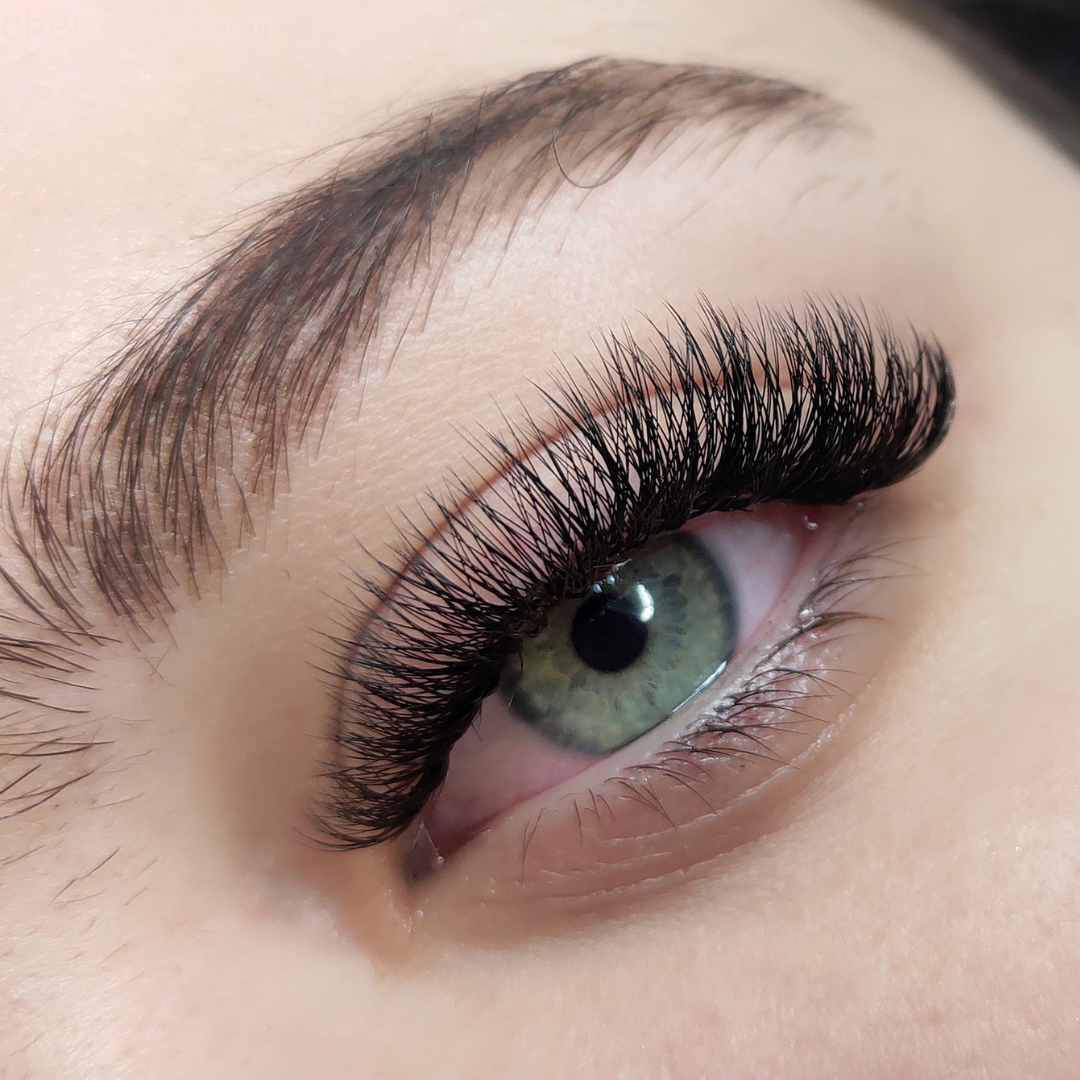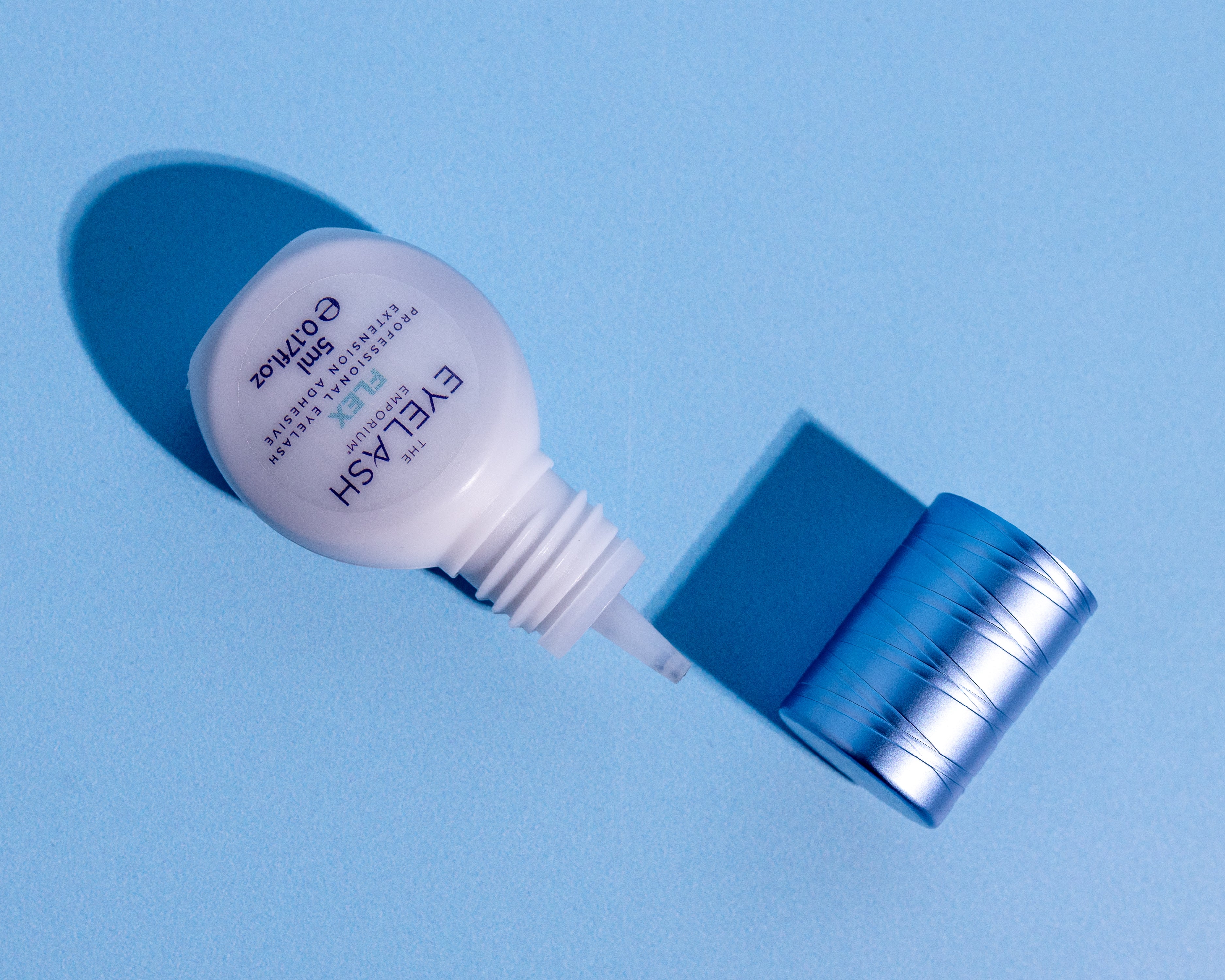Is It a Chemical Burn or an Allergic Reaction to Eyelash Extensions?

We've all been there – it's the day after a client appointment, and you get a message from them in a bit of a panic. They're describing something that sounds like an allergic reaction or maybe even chemical burns, and they've got the photos to prove it. It's a situation that can make anyone a bit uneasy, both the client and the lash technician. But don't sweat it - we're here to break it down without diving too deep into the technical stuff.
Let's start by clearing up a common misconception. Clients aren’t typically allergic to the lash extensions themselves. Modern lash extensions are usually made from hypoallergenic materials like polybutylene terephthalate (PBT), not silk, mink, or cashmere, as some names might suggest.
In most cases, the real agitator is the adhesive, typically the cyanoacrylate ingredient. Cyanoacrylate is the essential bonding agent in lash glue, ensuring that extensions adhere to natural lashes securely. However, it is a potent chemical that can lead to irritation in certain circumstances.
How Do You Tell Chemical Burns apart from Allergic Reactions?
It's all about where they cause trouble. Chemical burns tend to happen inside the eye, making the white part of the eye look a bit red and bloodshot and causing a burning sensation. On the other hand, allergic reactions are more about the outer eye area, making the eyelids swell up, irritating the skin, and causing itchiness and discomfort.
Who's at Risk for Chemical Burns?
Chemical burns can happen to anyone, especially if a client keeps opening their eyes during their appointment. This can happen when clients can't resist checking their phones, have a sudden caffeine-induced eye twitch, chat too much, or if your hand slips and pushes the lower eyelid down. People with bulging eyes might also struggle to keep them closed during the procedure.
How Do You Lower the Risk of Chemical Burns?
Let’s talk damage control. There are a few things you can do to make sure chemical burns don't disrupt their lash appointment:
- Suggest that clients skip the caffeine for at least an hour before their appointment. It can help keep those pesky eye twitches at bay and keep clients relaxed or even help them fall asleep, preventing them from chatting too much.
- Use thick tape alongside under-eye patches to prevent the lash adhesive fumes from getting into the eye. A thicker tape can help with this, especially for clients with more prominent eyes.
- Ensure the under-eye patches sit comfortably on the client’s lower lashes and skin. Incorrect placement can cause discomfort and lead to spontaneous eye openings.
- Ease up the pressure on your isolation tweezers. It may take some practice, but it reduces the chance of accidentally opening the eye.
- Encourage clients to silence their phones and alarms to maintain a serene environment.
Dealing with Chemical Burns
If the worst happens, and chemical burns do appear, unfortunately, there is no magic cure. However, the redness should calm down in a few days, even if it looks worse than it feels. Tell your clients to talk to a pharmacist if they're uncomfortable. But remember, you're not a doctor, so avoid giving medical advice or recommending specific eye drops.
Can Clients with Chemical Burns Get Lash Extensions Again?
They can, but precautions are necessary to keep their eyes tightly shut. Exposing chemical burns to more chemicals increases the odds of future allergic reactions, so prevention is key here.
Who’s prone to allergic reactions?
Anyone can suffer an allergic reaction during or after getting lash extensions, but there's a higher chance that a long-term client might develop one suddenly compared to a first-time client. That's because allergies to chemicals tend to build up over time. It's the body's way of gradually building a reaction until it decides it doesn't like something. And as people age, the severity of allergies can change, with some getting better and others getting worse. Since our cells regenerate every few years, it's not uncommon for our body’s responses to different stimuli to evolve.
We’re not saying that all long-term clients will have a reaction or that first-time clients won’t because it can happen to anyone. It’s essentially a developed allergy that can manifest at any point or persist throughout our lives.
Reducing the Risk of Allergic Reactions
Reducing the risk of allergic reactions can be tricky, as they can happen despite all precautions. Whether you're using a slow-drying lash adhesive (slower drying means less cyanoacrylate) or you use a fast-drying lash glue (faster glue means more cyanoacrylate but also means less exposure to adhesive fumes over a longer period), some clients may still react. Predicting if or when a reaction will occur can be a lottery, but the reality is that once a client has reacted, you should not provide further treatments, as it can and likely will worsen the reaction.
The Scoop on Patch Tests
Now, you may be thinking that there was no reaction during a patch test. However, they're not 100% accurate. A patch test involves applying only a small number of lash extensions per eye with a much smaller amount of adhesive compared to the amount used for a full set. Patch tests cover just 10-20 individual lashes, while a full set can have 80-150 lashes, exposing clients to different levels of lash glue fumes. Plus, as we know, allergies can creep up over time. Someone might initially be fine after a patch test but then react unpredictably after a few appointments.
Handling Allergic Reactions
When clients find themselves having an allergic reaction, quick action is needed. Encourage them to see a doctor or pharmacist for medication to ease the reaction. If lash removal is needed, go for a cream remover. It's more precise than gel and doesn't drip or run into the eye. If the reaction is serious and the eye has swelled significantly, clients should calm the symptoms by taking prescribed medications and then come to you for removal to avoid extra discomfort. If the eyes are very swollen, they may cover the lash extensions, making removal difficult for you and even more uncomfortable for the client.
Can Clients with Allergic Reactions Try Lash Extensions Again?
Generally, it's best for clients who’ve had allergic reactions to avoid having further lash extension treatments. These reactions tend to pile up and worsen with time, and some insurance providers might not cover you in these situations. If a client insists on giving it another shot, maybe consider a minimum six-month break before trying a half set. But remember, even with a break, there's still a risk of more allergic reactions in the future. Alternatively, suggest a lash lift treatment to boost their natural lashes and explore other services you offer while keeping things safe.
So, in a nutshell, understanding the difference between chemical burns and allergic reactions with lash extensions is crucial. While they can be unsettling, with some smart precautions and guidance, you can keep these problems at bay and keep your clients happy and safe.


